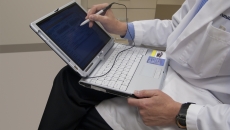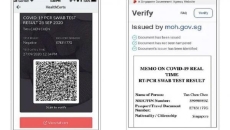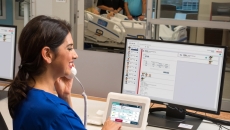Roy Chiang
As part of the slew of improvements that the National Electronic Health Record (NEHR) will receive, more healthcare institutions within the country will also be brought on board to contribute to the NEHR.
HealthCerts, an amalgamation of cryptographic hashes, blockchain technology, privacy protection and proof identity, is a set of open-source digital standards which is utilised for the issuing of digital COVID-19 test result certificates.
In this trial run, Air New Zealand airlines will require passengers to utilise the International Air Transport Association’s (IATA) Travel Pass application to prove that they have been vaccinated against the COVID-19 virus before they are allowed to board the plane and continue with their journey.
The vaccine which was developed by Chulalongkorn University showed promising results in prior trials with mice and monkeys.
Ascom is a global technological solutions provider which specialises in healthcare information communication technology and mobile workflow systems.
For digital health services to work well, building community confidence in its usage through extensive testing is essential.
In this eighth episode of HIMSS Australia Digital Dialogue Series hosted by Tim Kelsey Senior Vice President of HIMSS Analytics International and guest speakers- Steve Hambleton (Deputy Chair of the Primary Healthcare Reform Steering Committee and Adjunct Professor), Martin Bowles AO PSM (National Chief Executive Officer, Cavalry Health Care), Dr Louise Schaper (Chief Executive, Australasian Institute of Digital Health) and Prof Mary Foley (Managing Director, Telstra Health) share more about the implications which COVID-19 has had on digital health as well as the obstacles encountered whilst implementing telehealth across Australia.
In the seventh episode of HIMSS Australia Digital Dialogue Series hosted by Tim Kelsey Senior Vice President of HIMSS Analytics International and guest speakers- Dr Zoran Bolevich (Chief Executive of eHealth NSW), Emma Hossack (CEO of Medical Software Industry Association & Director of Australia Digital Health Agency), George Margelis ( Independent Chair of Aged Care Industry Information Technology Council), Kate Quirke (Chief Executive Officer and Managing Director , Alcidion) and David Williams (Country Manager of Ascom Australia) discussed New South Wales’ transformation of their healthcare landscape through their three pronged framework to embed, accelerate as well as innovate through insights derived from data driven approaches.
At the HIMSS APAC Malaysia Digital Health Summit session titled “Digital Health - From Innovation to Adoption” by guest speakers Wilson Choo (Chief Executive Officer of Sunway Medical Centre Velocity) and Dr Ng Xin Jun (Manager of Sunway Group Healthcare), both shed light on the various technological healthcare advancements made at Sunway Medical Centre Velocity (SMCV) as a case study.
The COVID-19 global crisis has undoubtedly brought about huge changes in healthcare systems all over the world.




